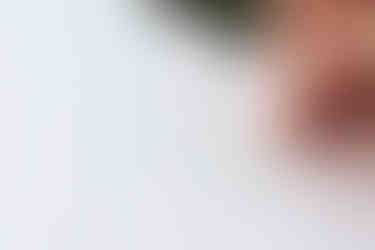Painting with aquarelle in nature scenery
- KOH-I-NOOR HARDTMUTH

- Aug 18, 2021
- 4 min read

Have you been inspired by our article on the history of watercolour and would you like to try working with this very popular medium? The blooming flowers and sunsets literally invite you to do so, don't they?
In the following text, we will give you some basic tips that will surely come in handy when working with this type of medium. In return, you can send us your creations to blog@koh-i-noor.cz. We look forward to hearing from you!
CHOOSING THE RIGHT TYPE OF AQUARELLE

Aquarelle colours can be found in our e-shop as solid cubes, which are professionally called pans or cuvettes. In addition to the individual colors, which you assemble into your own colour scheme, you can purchase a complete set of colors assembled by the manufacturer. These sets also include a palette, in some cases even brushes. However, if you decide to put together your own watercolor set, don't forget to buy these accessories, they will definitely come in handy.
For those who do not feel confident about painting yet and prefer to grab a pencil, there are aquarelle crayons. Creating with them is very simple and thanks to the quality pencils with excellent drawing properties and brilliant shades, the resulting pictures are great.

CHOOSING THE RIGHT PAPER
There are several types of paper on the market suitable for aquarelle paintings and it is up to you which will suit you best. You can choose from three basic types of manufactured papers. These are hot-pressed papers, cold-pressed papers and rough papers. The first type is very smooth and therefore not completely suitable for aquarelle technique. However, cold-pressed paper together with the rough type is an ideal surface for aquarelle paintings. In addition, rough paper can create interesting effects in combination with aquarelles.
In addition to machine-made papers, you can also use hand-made papers of course. Suitable are those made of linen cloths and subsequently treated with a starch.
However, the most important thing is to choose a heavier paper. Thanks to the heavier weight, i.e. thicker fibers, the paper does not curl so much when soaked and retains its shape. Aquarelle papers are available with a fine texture, in the form of glued blocks. We recommend a sketchbook with a paper weight of 250g/m2 for classic aquarelle painting. A notebook with papers weighing 110g/m2 is sufficient for drawing with aquarelle crayons and then adding the water to them.

CHOOSING THE RIGHT BRUSH
Next to the right paper choice, it is also very important to pick the right brush. The right one should handle a large amount of water. It should be able to hold it and gradually release it together with the pigment. The bristles should be soft, durable and, at best, natural.
Did you know that...? The highest quality brushes are made of the ends of tail hair of rodents such as sables or squirrels. No wonder, then, that these brushes are a little more expensive than conventional ones.
Watercolor painting is of course also possible with synthetic brushes, if you prefer them. They are good for capturing the finest details and are also less expensive.
You have to try different shapes and sizes of brushes by yourself to find the ones which suit you. Normally, however, even experienced artists need two to three brushes to create with aquarelle paints. One large for laying colored areas and one or two smaller. It is important that none of the brushes loosens its hair and does not damage your artwork.
After painting the picture, wash the brushes properly with ordinary soap under running warm water. Before storing them, make sure they are dry enough to prevent them from getting mold. Place the brushes upright, with the hair tip up. This will avoid their deformation.

COLOR INTENSITY
The high-quality KOH-I-NOOR aquarelle paints are very rich and concentrated. So keep in mind that when they are in the pan, they look different from what they look when dried on paper.
All types of aquarelle paints have in common that the appearance of the final image is unpredictable. Also keep in mind that painting with aquarelle paints, unlike oil painting, for example, cannot be so easily remade or covered with other layers. However, if a situation arises that something does not work for you, the surface can be gently washed away with a sponge, repainted to some extent or you can wash the whole painting with a weak stream of water.
Now there's nothing stopping you from sitting down in the grass with a sketchbook and starting to draw the nature around you!

The first thing you do is sketch out the whole composition with a pencil or mechanical pencil. This will prevent your chosen view from not fitting on the paper at the very end.
Prepare the colours you are going to use in the metal palette. From our own experience, we recommend starting with the lightest shades and gradually darkening them.
Think about the distribution of highlights and shadows right from the start. The areas that will be the lightest do not need to be overlaid with paint at all. You can let the pure white background shine through.
Gradually move from the largest areas to details such as leaves, branches, pebbles and so on.

At the end, capture the shadows and highlight some lines to help the viewer identify some of the objects in the painting. However, if you prefer a more abstract painting, you can of course leave the painting more expressive.
Let the finished sketch dry properly and you're done!


























Geometry Dash inspires determination, as players often spend hours repeating the same level, refining their timing and improving skills until they can finally clear the stage successfully.